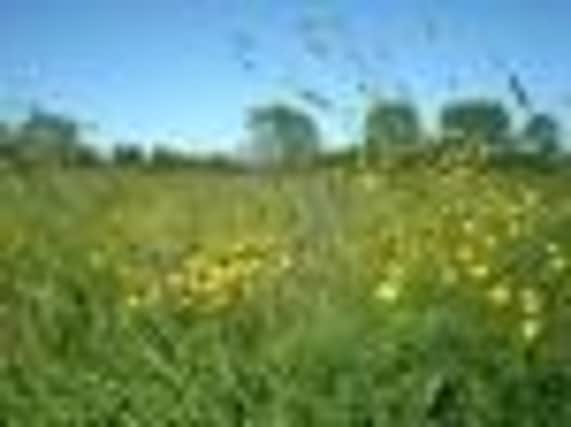Wildflower meadows set to create a buzz


Over the next two years, 15 locations in the city will be seeded with a range of either annual or perennial plants to provide pollen and nectar for bees and other insects.
Next summer, scientists will visit the meadows and survey the insects – which fertilise plants as a result of gathering their nectar and pollen – and assess how they are affected by the growth of urban areas.
Advertisement
Hide AdAdvertisement
Hide AdThe results will help the scientists work out the best way to maintain a diverse population of insect species, which in turn will help sustain plants and flowers in cities.
Among the first meadows to be planted over the next month are Joppa Quarry Park, Pilrig Park, Saughton Park, West Pilton Park and Davidson Mains Park, with vivid colourful displays expected to appear within eight weeks.
Firrhill High School has also been chosen to take part in the project because its grounds have suitable areas to plant one of the wildflower meadows, which are 100 metres by 10 metres in size.
The Urban Pollinators Project, which involves scientists from Edinburgh University and also city council officials, is part of a £1.3 million UK-wide study which includes Bristol, Leeds and Reading.
The decline in insects such as bees, butterflies and hoverflies, which pollinate 80 per cent of plants in Britain, is causing concern among conservationists. Over the past 20 years there has been a dramatic 50 per cent decline in bee numbers.
Butterfly numbers are also falling, with three-quarters of the 59 species in Britain under threat.
Conservationists are increasingly turning their attention to ways of helping the insect and bee population in urban settings as a way of improving numbers. Bees and insects in the countryside are in rapid decline because they are often surrounded by one type of crop which is in flower for only a short time.
The wildflower meadows, which can contain up to 40 plants per square metre, will include perennials such as red campiom and ox-eye daisies, while the annual flowers include cornflowers, marigold and Californian poppies.
Advertisement
Hide AdAdvertisement
Hide AdProfessor Graham Stone, of Edinburgh University’s School of Biological Sciences, said: “Edinburgh has a wide array of pollinating insects, including bees, beetles and butterflies. Our work will help to suggest the most effective conservation methods for these insects, whose role in creating flowers we so often take for granted.”
Councillor Robert Aldridge, the council’s environment leader, said: “Many of Edinburgh’s parks and green spaces are home to a rich variety of wildlife. By sowing wildflower meadows across the city we can not only learn more about the behaviour of pollinating insects but also help create important natural habitats for these insects to thrive in. I’m delighted to see this project put into action as part of a wider programme to protect and enhance Edinburgh’s natural heritage.”
The project, which also involves the Universities of Bristol, Leeds and Reading, is being carried out until July 2014.
It is funded by the Scottish Government, Defra, the Biotechnology and Biological Sciences Research Council, the Natural Environment Research Council and the Wellcome Trust.